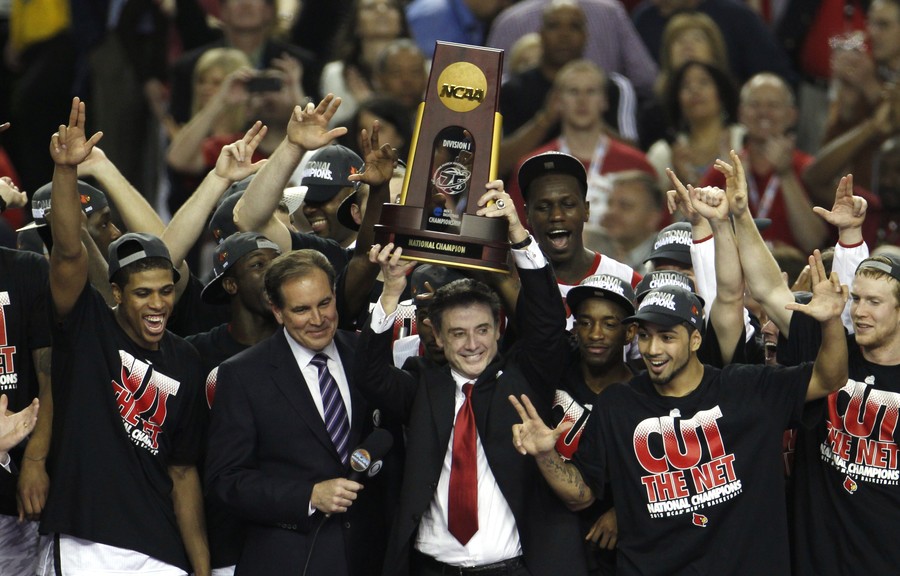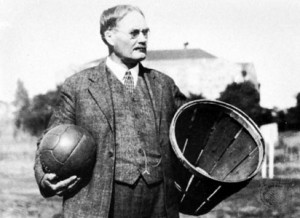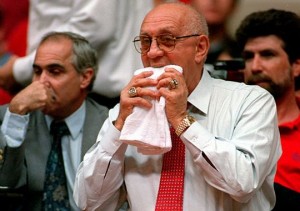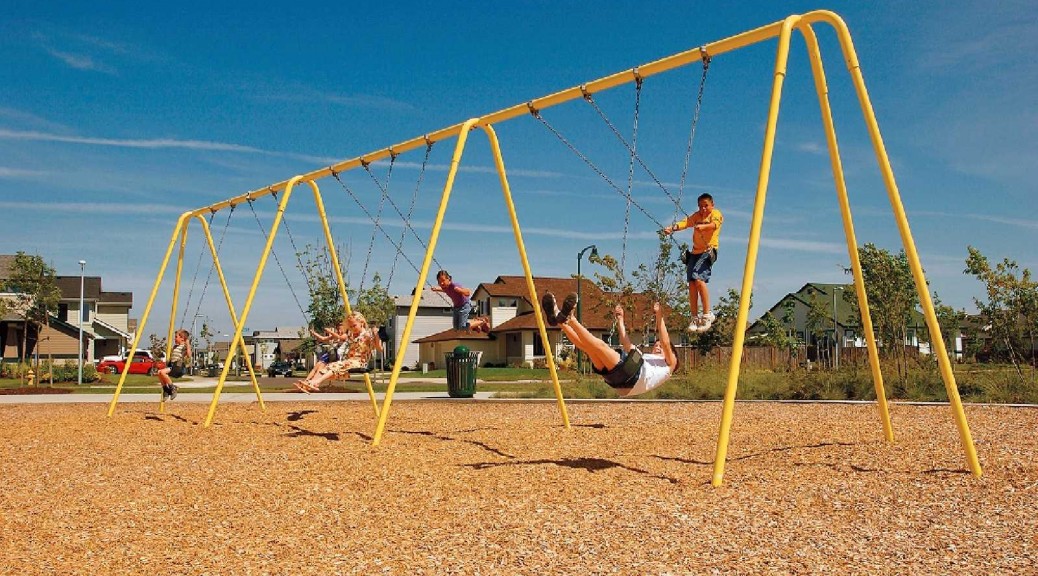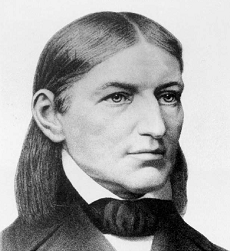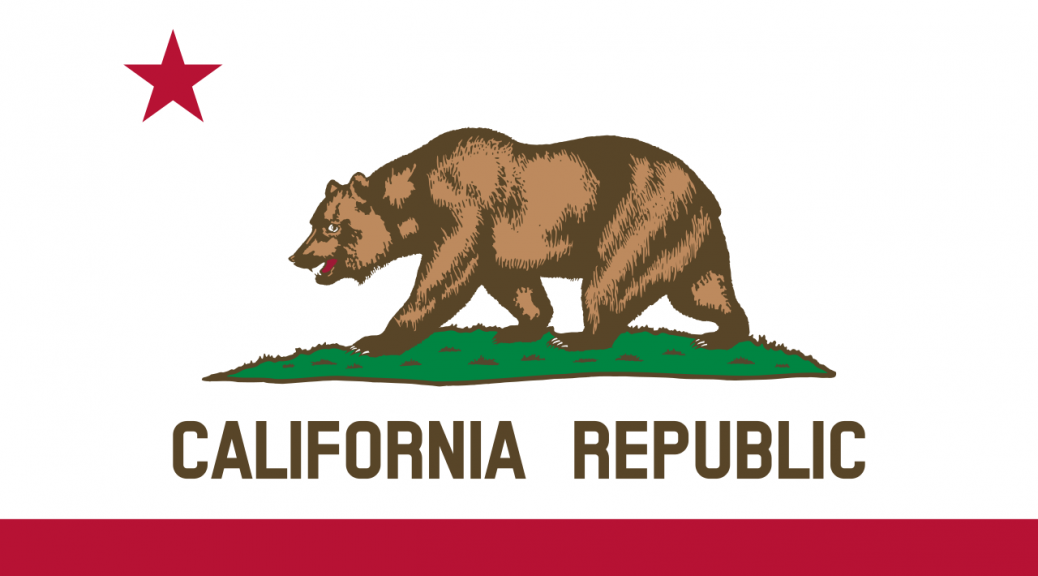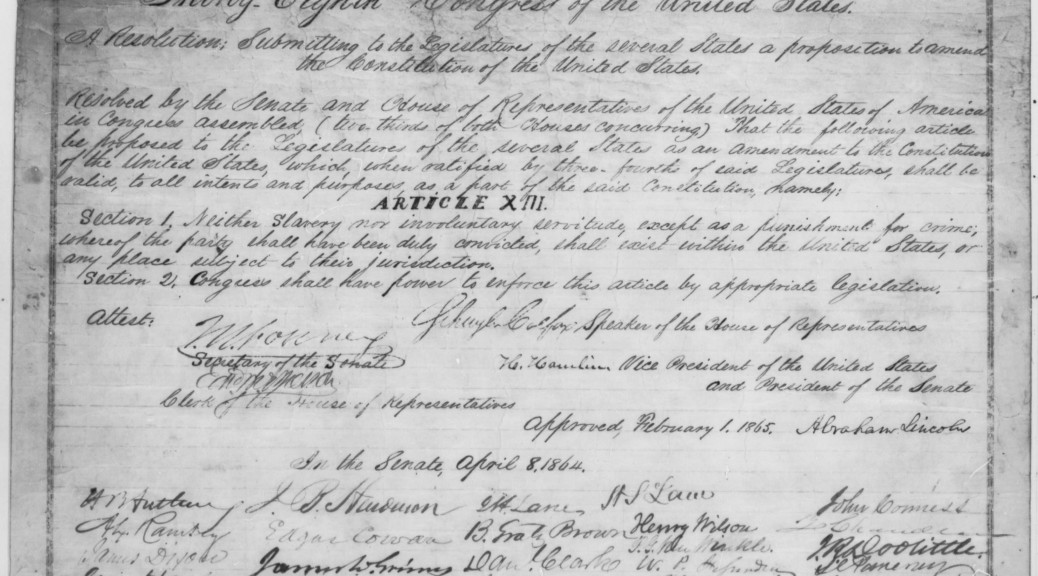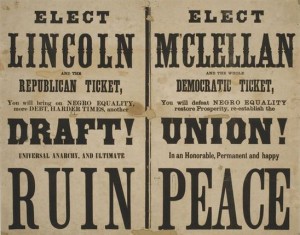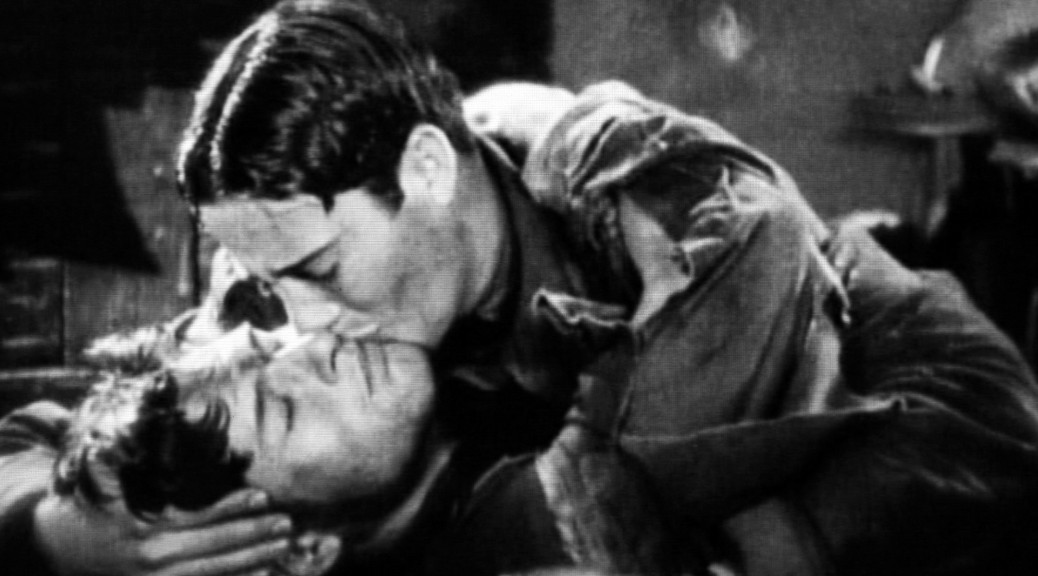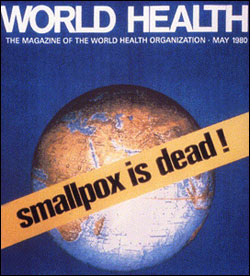Okay, first I want to say that while a Canadian invented the very American sport of basketball 1891, he was in the U.S. at the time and he continued to stay in the country, eventually becoming a citizen. When people say that immigrants do jobs that Americans won’t, this is the kind of outcome I expect. Move to America and create a game that becomes an important part of American culture. Especially if, like basketball, it generates almost $5 billion a year. (Only counting income from the NBA.)
James Naismith was working at Springfield College in Massachusetts as a physical education instructor. He needed a game that could be played inside during the winter. The first game had 9 players on each of two teams and it was played with soccer balls with vegetable baskets nailed to poles as nets. That meant that every time there was a basket, someone had to climb up and get the ball back down. (Or at least be up on the gym’s balcony, the same level of the baskets.) It took about a decade until the game was played with open ended nets.
We can thank vegetable baskets for the name basketball. Or thank the college’s janitor who was sent to find two boxes they could use as goals. If he’d been able to find them instead of the baskets, we’d now be playing boxball. Either way, I’m sure glad they don’t have to stop and fetch the ball after each basket. Talk about throwing off the rhythm of the game!
The original rules for basketball were:
- The ball may be thrown in any direction with one or both hands.
- The ball may be batted in any direction with one or both hands, but never with the fist.
- A player cannot run with the ball. The player must throw it from the spot on which he catches it, allowance to be made for a man running at good speed.
- The ball must be held by the hands. The arms or body must not be used for holding it.
- No shouldering, holding, pushing, striking or tripping in any way of an opponent. The first infringement of this rule by any person shall count as a foul; the second shall disqualify him until the next goal is made or, if there was evident intent to injure the person, for the whole of the game. No substitution shall be allowed.
- A foul is striking at the ball with the fist, violations of Rules 3 and 4 and such as described in Rule .
- If either side makes three consecutive fouls it shall count as a goal for the opponents (consecutive means without the opponents in the meantime making a foul).
- A goal shall be made when the ball is thrown or batted from the grounds into the basket and stays there, providing those defending the goal do no touch or disturb the goal. If the ball rests on the edges, and the opponent moves the basket, it shall count as a goal.
- When the ball goes out of bounds, it shall be thrown into the field and played by the first person touching it. In case of dispute the umpire shall throw it straight into the field. The thrower-in is allowed five seconds. If he holds it longer, it shall go to the opponent. If any side persists in delaying the game, the umpire shall call a foul on them.
- The umpire shall be the judge of the men and shall note the fouls and notify the referee when three consecutive fouls have been made. He shall have power to disqualify men according to Rule 5.
- The referee shall be judge of the ball and shall decide when the ball is in play, in bounds, to which side it belongs, and shall keep the time. He shall decide when a goal has been made and keep account of the goals, with any other duties that are usually performed by a referee.
- The time shall be two fifteen-minute halves, with five minutes rest between.
- The side making the most goals in that time shall be declared the winner.
Here is a link to the NBA 2014 – 2015 rule book (pdf). From 13 rules to 66 pages.
Soldiers going to war in the First World War took the game with them. At home in America, the game went from one that was just played between sides in a PE class to intercollegiate games. These early games were not high scoring games – lower than a good baseball game, higher than an average soccer game. Still more than 100 times more interesting than soccer.
Now the NBA (professional basketball league) has 30 teams, 29 in the US and that one oddball in Canada. (I do think that Raptors is a fantastic name so I’ll overlook their not-in-Americaness.) There are 351 men’s college Division 1 teams and 348 women’s teams. That’s a lot of people playing basketball and it doesn’t even take into account all the high school teams, teams in other countries (except that one NBA Canadian team), and all of the pick-up games where everyone has great fun keeping the ball away from C.L. while singing Randy Newman’s song Short People. Ha Ha. That just never gets old.
RIP Jerry Tarkanian – August 8, 1930 – February 11, 2015

